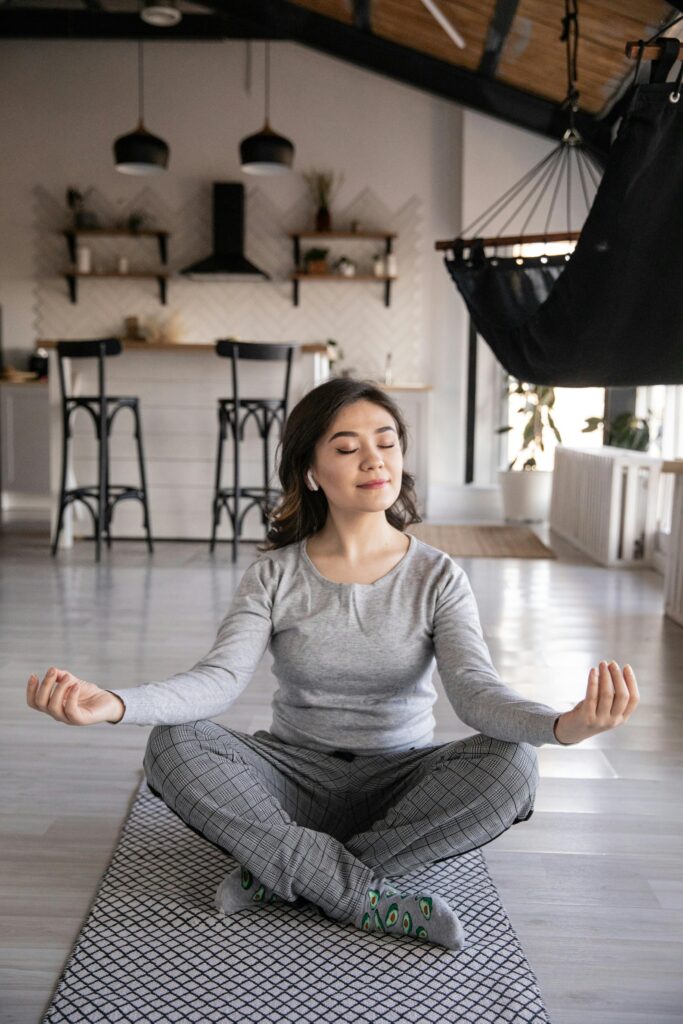Yoga is basically an ethical practice that concentrates on integrating the individual’s mental and physical faculties into synchronization. It is founded on a very sensitive discipline. It is both a science and an art to lead an active lifestyle. From the Sanskrit root “Yuj,” which means “to connect with,” “to bind,” or “to unite,” comes the term “yoga.”
Yoga helps women manage their monthly cycles of menstruation and significantly reduces the discomfort of their cramps during their period.
The routine of yoga during periods is a contentious and much studied topic. While some argue that a woman shouldn’t practice yoga when she is menstruating, several advise doing it anyhow. Forget it, advise some, and practice inverted shapes, say others. Practice healing asanas, according to some, or develop a powerful execution, according to experts.
Practicing yoga during menstruation is a personal choice, and there are varying opinions on whether it’s beneficial or not. Some yoga practitioners and instructors suggest modifying or avoiding certain poses during menstruation, while others believe that a gentle yoga practice can actually help alleviate menstrual discomfort and promote overall well-being. The following things that should be kept in mind are as follows:

1. Listen to Your Body: Your body knows best, so it’s essential to tune in and listen to how you’re feeling. If you’re experiencing fatigue, cramps, or low energy levels, it may be a sign to take it easy and opt for a more gentle yoga practice or restorative poses.
2. Modify Intensity: If you choose to practice yoga during menstruation, consider modifying the intensity of your practice. Instead of vigorous flows or strenuous poses, focus on gentle movements, stretching, and relaxation techniques. Slow, mindful movements can help ease tension and promote relaxation.
3. Avoid Inversions and Deep Twists: Some yoga practitioners recommend avoiding inversions (poses where the hips are higher than the head) and deep twists during menstruation, as these poses may disrupt the natural flow of blood and energy in the body. Instead, opt for gentle twists and forward bends to help alleviate tension in the lower back and abdomen.
4. Embrace Restorative Yoga: Restorative yoga, which involves supported poses held for extended periods with the aid of props, can be particularly beneficial during menstruation. Restorative poses help activate the parasympathetic nervous system, promoting relaxation and stress relief.
5. Focus on Breath work and Meditation: Incorporating breath work (pranayama) and meditation into your yoga practice can be especially beneficial during menstruation. Deep breathing techniques help calm the mind, reduce stress, and alleviate discomfort associated with menstrual cramps.
6. Hydrate and Nourish: Stay hydrated and nourished before, during, and after your yoga practice, especially during menstruation. Drink plenty of water and eat nutritious foods to support your body’s needs during this time.
7. Be Mindful of Your Menstrual Flow: If your menstrual flow is particularly heavy or you’re experiencing severe discomfort, it may be best to avoid physical activity altogether and focus on rest and self-care.
Women can greatly benefit from meditation practices like yoga-nidra, which help to eliminate negativity and promote accepting and positivism of oneself. It is strongly advised against performing strenuous or tiring yoga poses.
Here are some of the main types of yoga and specific poses that are often considered beneficial during the menstrual cycle:
1. Hatha Yoga: Hatha yoga is a gentle and slow-paced practice that focuses on physical postures (asanas) and breath control (pranayama). It’s an excellent choice for promoting relaxation and reducing stress during menstruation.
2. Restorative Yoga: Restorative yoga involves holding supported poses for extended periods using props such as blankets, bolsters, and blocks. This practice promotes deep relaxation and helps relieve menstrual discomfort by releasing tension in the body.
3. Yin Yoga: Yin yoga consists of passive poses held for several minutes to target the connective tissues and promote flexibility. During menstruation, yin yoga can help alleviate tension in the hips, lower back, and abdomen.
4. Gentle Flow Yoga: Gentle flow yoga incorporates slow, fluid movements synchronized with the breath. It’s a softer version of vinyasa or power yoga and can be modified to suit your energy levels during menstruation.
5. Seated Poses: Seated yoga poses such as Sukhasana (Easy Pose), Baddha Konasana (Bound Angle Pose), and Janu Sirsasana (Head-to-Knee Forward Bend) are gentle on the body and can help relieve menstrual cramps and discomfort.
6. Supine Poses: Supine (lying down) poses like Supta Baddha Konasana (Reclining Bound Angle Pose) and Supta Virasana (Reclining Hero Pose) provide support and relaxation for the body, particularly the lower back and abdomen.
7. Breathwork (Pranayama): Incorporating breathwork practices such as Dirga Pranayama (Three-Part Breath) and Nadi Shodhana (Alternate Nostril Breathing) can help calm the mind, reduce stress, and alleviate menstrual symptoms.
8. Meditation: Meditation, whether seated or lying down, can be beneficial during menstruation for promoting relaxation, mental clarity, and emotional balance.
Remember to honor your body’s needs and listen to any signals it may be sending you during your yoga practice. If a pose or movement feels uncomfortable or exacerbates menstrual symptoms, it’s okay to skip it or modify it to suit your comfort level. Always prioritize self-care and gentleness during your menstrual cycle.
Ultimately, the decision to practice yoga during periods is a personal one, and it’s essential to honour your body’s needs and limitations. Consulting with a healthcare provider or experienced yoga instructor can also provide valuable guidance tailored to your individual circumstances.




